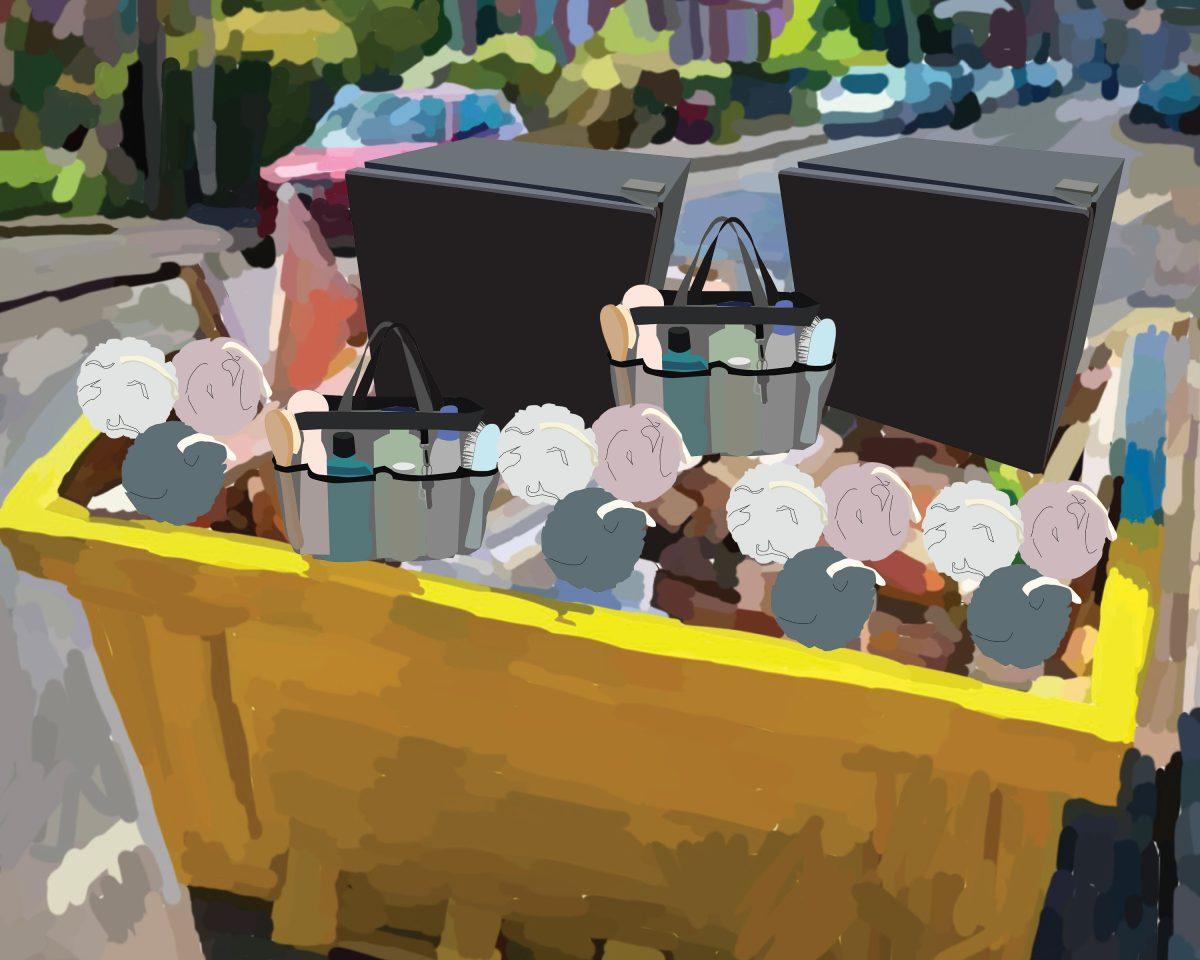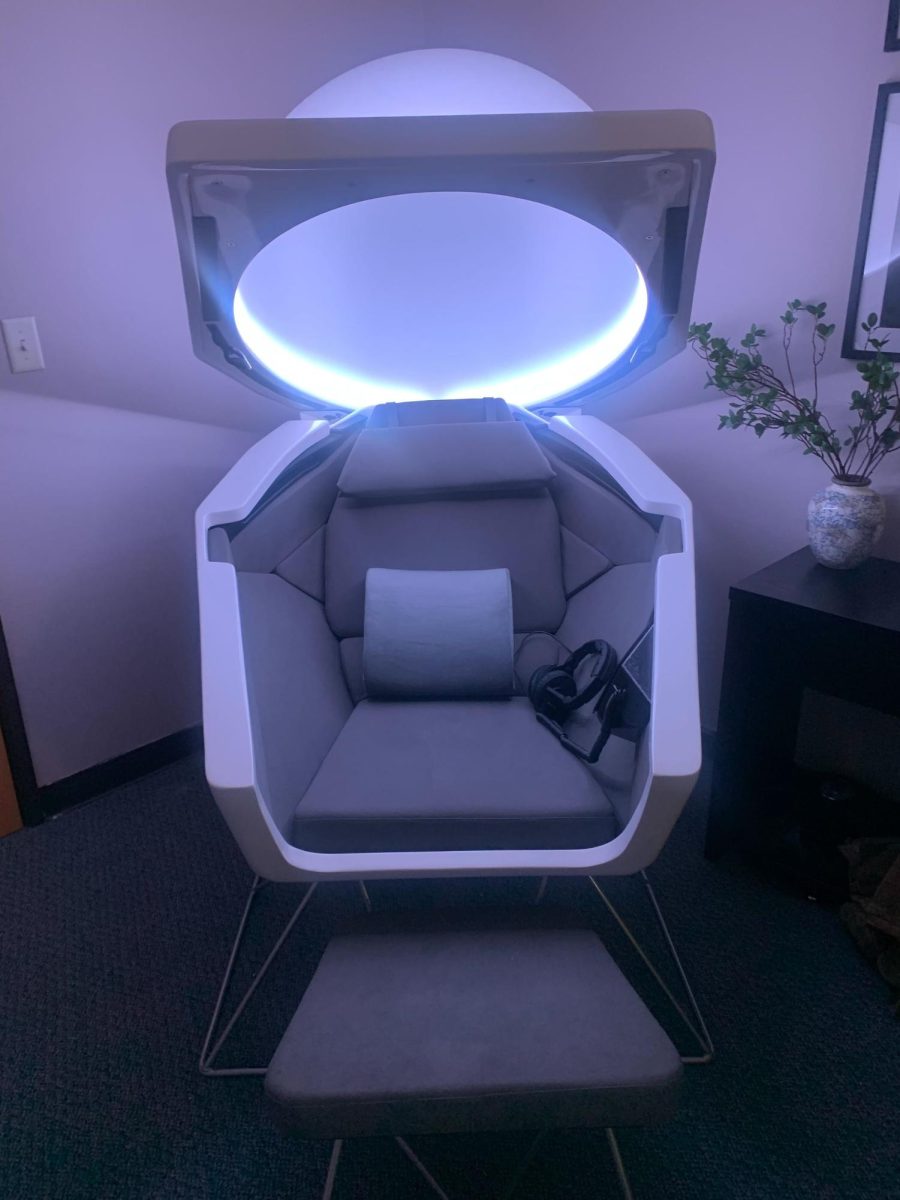Opinion: The excitement of moving into one’s college dormitory and settling into college life is overwhelming for most. The idea of being a sustainable college student is probable for few.
———-
This fall ushered in 5,338 freshmen students on campus (a record breaking amount of incoming students), and many of them moved into University of Oregon’s on-campus dormitories. With them, they brought shower caddies, mini fridges, wall decor, power strips and more. These essentials can help make the transition to college life easier and more comfortable by creating a safe, pleasant environment. The problem is: most of these products are used only during the nine months of dorm living and spend the rest of their days in a landfill after move out day.
I was that wasteful freshman too just a few months ago. Ashamedly, I threw out my plastic toothbrush container and plastic soap container at the end of my dorm days, wondering why I bought them in the first place –– not to mention the shower shoes and storage containers meant only for my dorm; so many items have been lost to the waste-mountains.
As I prepared to purchase housing products for my apartment over the summer, I figured out I went about decorating my dorm room all wrong. I could have kept the same comfortability while still being sustainable. I should have thought before purchasing, shopped secondhand or researched sustainable brands to buy from. Now I apply this knowledge to almost everything I purchase… but I believe I can speak for a lot of students out there when I say that at the time I just didn’t know how to be sustainable.
According to Planet Aid, the “average college student produces 640 pounds of trash annually,” with a “significant spike in the amount of solid waste” — furniture, knick-knacks, temporarily used items, etc. — “on college campuses specifically during the months of May and June.”
This spike points to an average of 230 tons of waste produced within the two months when college students move out of their living spaces during the typical school year. Now imagine this amount of waste every year, across every campus. That’s just trash — a lot of it.
Ruby Mulgrew, a junior at UO, just moved into Kappa Alpha Theta’s sorority house. After a year break from living in the dorms, she ran into some issues with having to purchase “dorm essentials” again.
“I didn’t keep any of my products. I dumped my shower caddy because it was disgusting and was never going to use it again,” Mulgrew said. “I also got rid of my mattress topper because I couldn’t lug it back home for the summer either.”
Now that she’s living in a sorority — a situation similar to dorm life — Mulgrew needed to repurchase everything she’d already disposed of. As she was talking to other members of her chapter, she found out that “the juniors of the [sorority house] had to re-buy everything [as well] because they didn’t know they were going to join a sorority in college.”
Mulgrew believes such issues with dormitory sustainability can be easily fixed.
“University of Oregon should set up a donation bin and store it over the summer, then offer [the items] to new students who move in,” Mulgrew said. Tuition is already expensive. And when additionally paying for food, housing and cleaning products, the money adds up just as quickly as trash does.
The Zero Waste Program at UO has seen this issue across campus for a while now. Founded in 1990, the program seeks to reduce waste across campus and has some guidelines for students on sorting trash. While these guidelines are great, they could provide more information about different kinds of waste, such as personal items. Since the Zero Waste Program aims for literally zero waste, isn’t it about time to tackle what to do with dorm waste? What should students do with their shower caddies in June, for example?
As you move through the year (yes, literally moving in and out), remember the humbling fact that you might be that average college student producing 640 pounds of waste. I know I didn’t know that last year at this time. Keep your items for a little longer, give them to a friend who needs them or wait and see what products you truly need before purchasing. This will save you money and time –– and it also helps reduce a lot of waste pollution.













